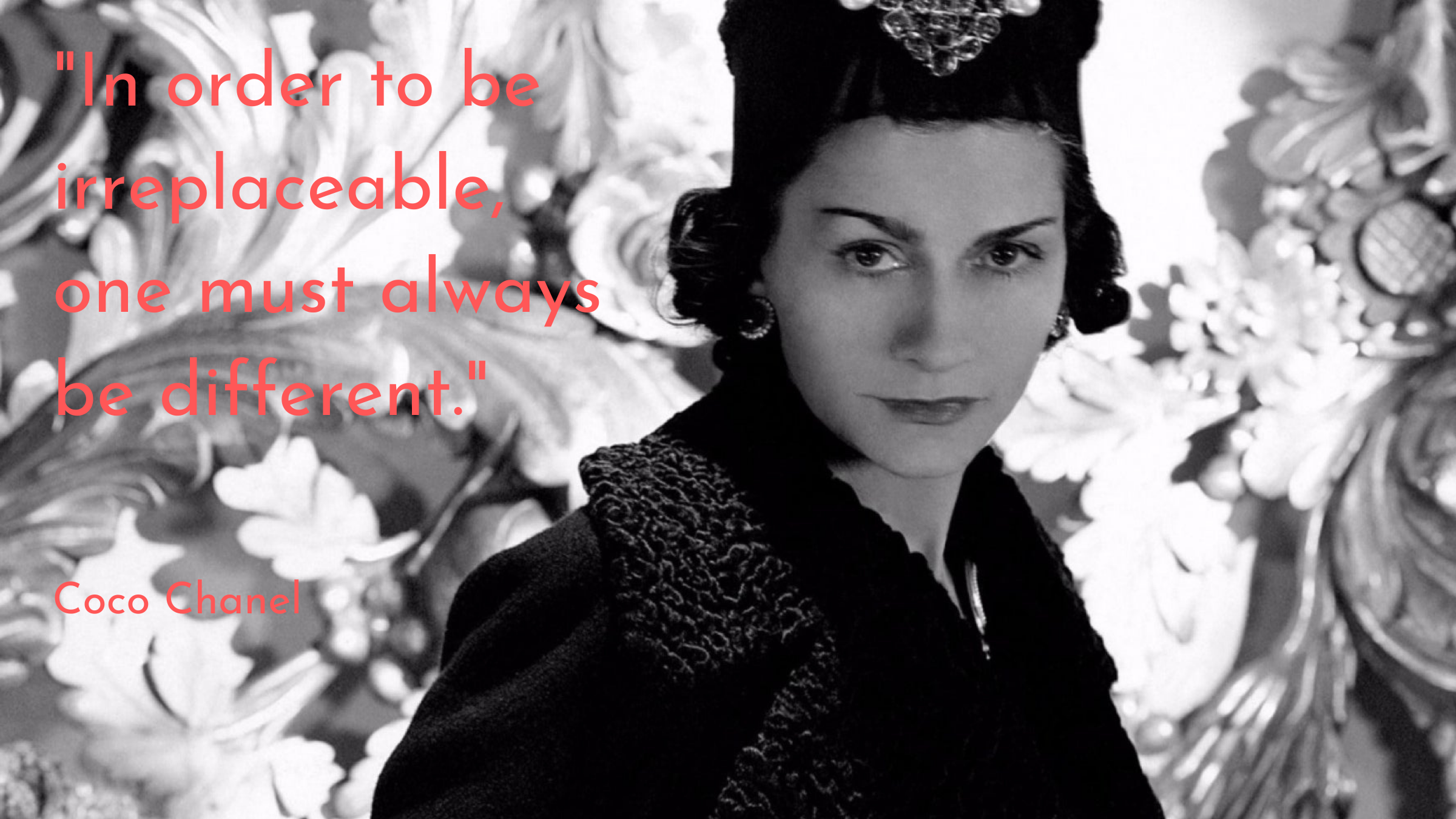
27 Apr Disruption and Coco Chanel
Gabrielle Bonheur “Coco” Chanel was 31 years old when WW1 broke out in 1914. Think about that. The fashion brand we still associate with classic high-style has existed and thrived for more than a century. What does it take to stay on the leading edge of the fickle fashion industry? Innovation, evolution, disruption and Coco Chanel. There is no better example of market disruption than Chanel.
Market Disruption
Before we address the groundbreaking feats of Mademoiselle Chanel, let’s start with the topic of market disruption.
At Axiom, our new product and insights teams are charged with identifying market disruptors that have the potential to replace our client’s antiquated product solutions. It may be crop protection technologies that help guard against the affects of climate change, remote power transfer solutions that don’t require batteries or transmission wires, or hand sanitizing systems that no longer require alcohol-based solutions to kill bacteria.
These are the types of disruptor technologies that we build innovation, channel strategy and content around.
Our goal is to accelerate our clients’ ability to pivot to new product or service solutions. A secondary goal is to help them identify factors within their value chain that they can harness more productively to address or weaken the market disruption factors working against them. The last goal is to help communicate with clarity why solutions or innovation remains viable to their customers and channel partners through strong messages, compelling content and eye-catching visuals.
Chanel’s Vision
Back to Chanel. For those of you who may not know, Coco Chanel epitomizes the classic rags-to-riches story. Poor and motherless, 12-year-old Chanel and her sisters were sent to an orphanage at a convent where she learned to sew. Fast forward to adulthood when she began designing hats and eventually clothing and accessories, establishing her global brand as the the first woman to run a fashion house in Paris.
Her vision? She believed that style for women should be simple and more elegant. Her principles: clean lines, classic colors and casual elegance. She eschewed the popular French style of the time that focused on cleavage, lots of skin and overall excessive design. Because her vision was so different from the other designers of the time, wealthy Parisian women began purchasing her hats and clothing, and she became fashion’s gold standard. Chanel, herself, was a disruptor, but her products became iconic. Enter… the Little Black Dress.
The Little Black Dress
Among the best example of Chanel’s impact and disruptive nature is the Little Black Dress. Ask any woman what the go-to dressy item is in her closet, and she’ll likely say, “I have a little black dress.” But it was Chanel that coined the phrase around 1912 when actress Suzanne Orlandi was one of the first women to wear a Chanel little black dress, in velvet with a white collar. In 1926, the American edition of Vogue magazine published an image of a Chanel little black dress with long sleeves. Vogue predicted that such a simple yet chic design would become a virtual uniform for women of taste, famously comparing its basic lines to the ubiquitous and no less widely accessible Ford automobile.
Did she disrupt or did she merely innovate? Most fashion historians say she did both.
Are you ready to discuss your potential for Market Disruption, contact Mike, mreiber@axiomcom.com.





No Comments